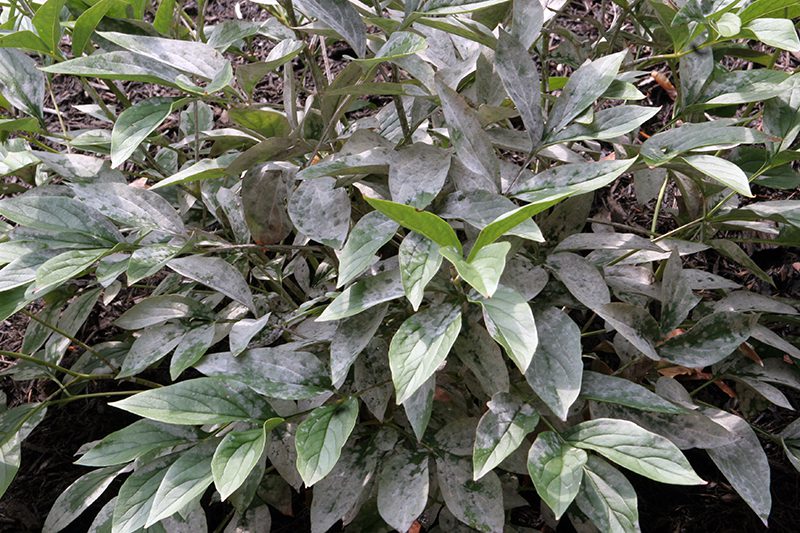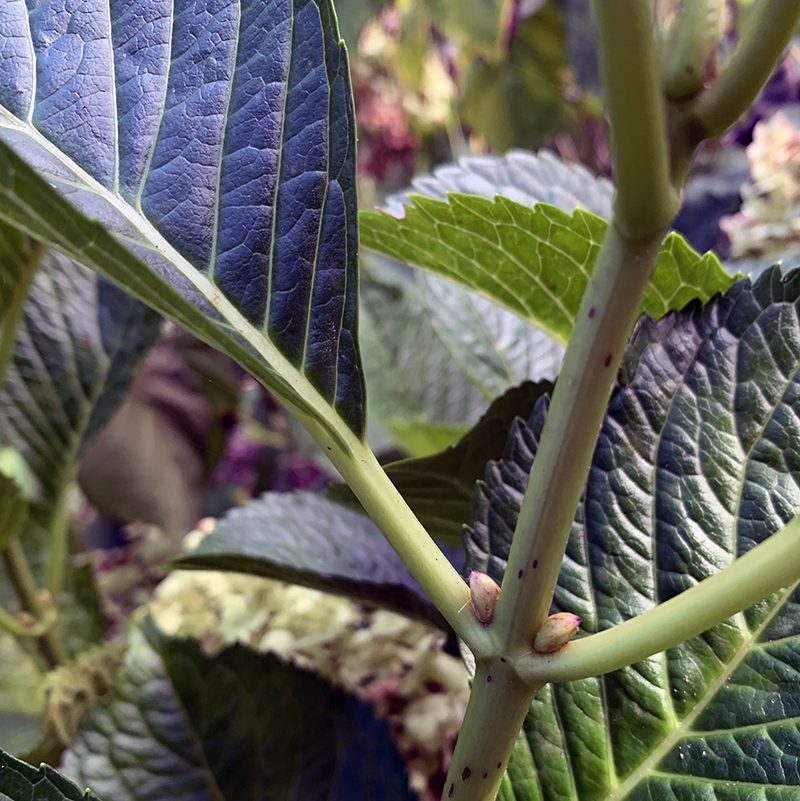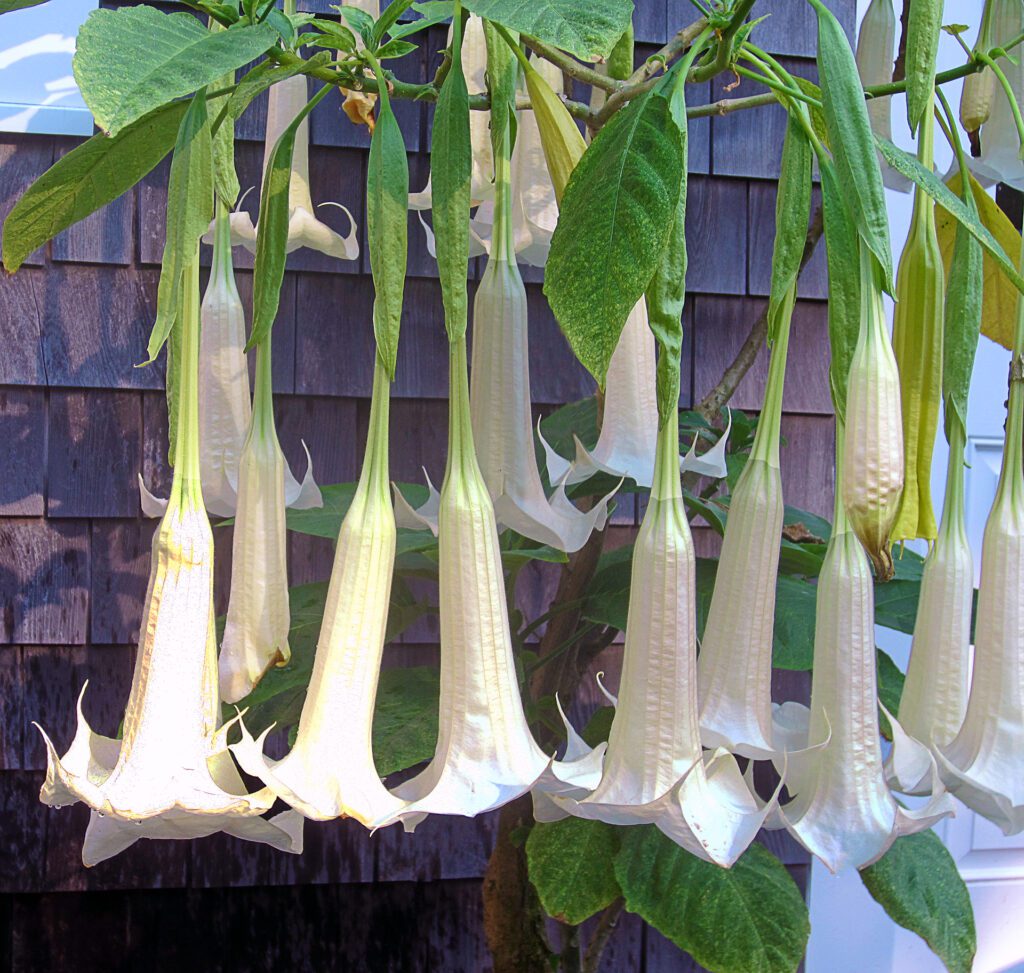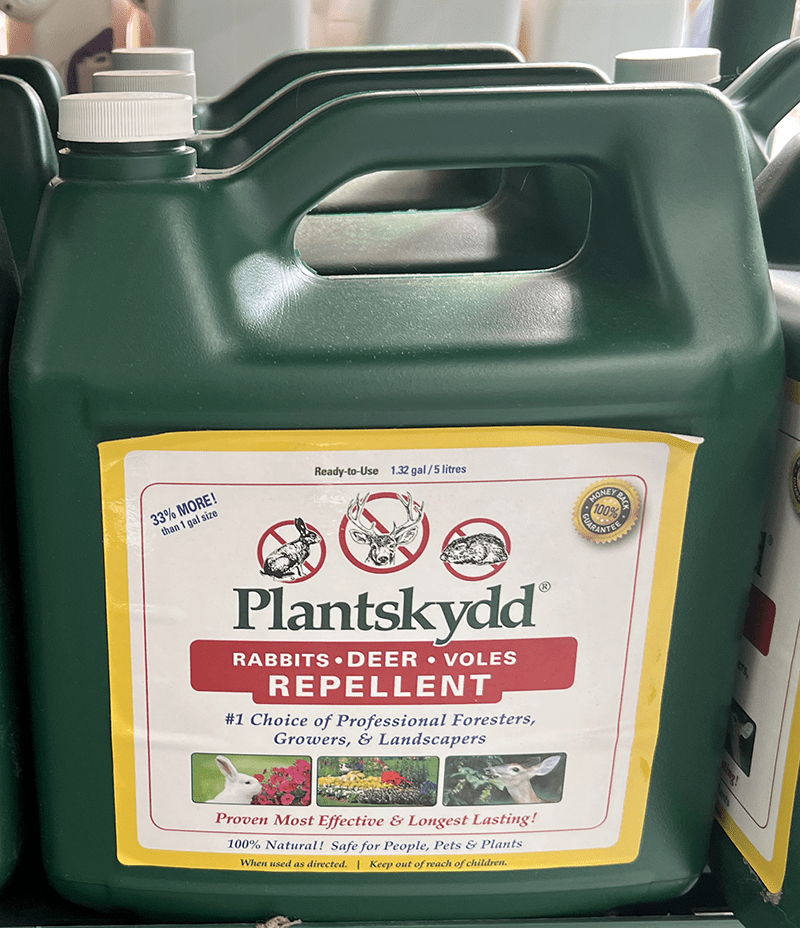Q&A From November Happy Hour
Q&A From November Happy Hour
Thanks to all who attended the November 10th Happy Hour about winter protection. The recording will be posted at the bottom of the Events page soon, and in the meantime you can watch it on Hyannis Country Garden’s Facebook page if you’re on that social network. As always, if there are questions we don’t get to during the hour, they are answered here.
Q. Marianne asked: ” I have some Encore Azaleas that were planted this past spring. I was wondering if I should do anything to protect? Would they benefit from the Wilt Pruf?”
A. Azaleas can get pretty winter-worn in this area, and they would definitely benefit from being sprayed with Wilt Pruf. Yours even more so since they are new to your landscape. Those with established azaleas that are in a sunny or windy location would also get some protection from spraying with Wilt Pruf.

Q. Kathy asks “What caused my arborvitae to turn brown in one spot—halfway up the 8’ tree?”
A. Without testing the tissue in a lab and looking at it under a microscope it’s impossible to know for sure, but here are the possibilities. 1. Physical injury. If a limb falling from a nearby tree it the plant, for example, and broke the branches they can die but remain on the plant. 2. Arborvitae needle blight or other fungal disease. See the UMASS information here. It’s unlikely that last year’s drought would have caused just one area to turn brown, but not impossible. At this point, pruning out the dead area would be advised, primarily so you can monitor if the situation is still going on. Note that arborvitaes don’t come back well from inner stems, so that space may not green up again.
Q. Anne asked “Should I use Wilt Pruf on a newly planted Soft Touch pine?”
A. Wilt Pruf is best used on broadleaf evergreens. If your Soft Touch was planted early in 2023 you probably don’t need to spray it since we’ve had regular rain all summer. But if this is a fall-planted shrub, using Wilt Pruf can’t hurt, and might help the plant through the winter.
Q. Donna asks “I have some goldenrods that are draping over a walkway. I usually leave them til spring, but thinking of cutting them back, maybe halfway. Would that stimulate growth? Or should it be cut to ground?”
A. If they are in the way you certainly could cut them back to the ground, but since goldenrod is one of the “keystone species” that supports wildlife, you might consider leaving them until spring. The seeds and stems provide food and shelter for birds and insects. Since this plant comes back from the roots, cutting the old stems now doesn’t stimulate growth. If you want to cut them, you might just toss the old stems and seed heads onto the edge of the property somewhere for wildlife to forage.
Q. Eileen asked “Should i cut back peonies now?”
A. Regular peonies can be cut back now. Tree peonies are left and the deadwood clipped off next spring.

Q. Joyce asks “Since Hydrangeas bloomed late this year…summer….will they bloom again in the spring?”
A. The hydrangeas that flowered in September and October are primarily Endless Summer, one of the remontant varieties of Hydrangea macrophylla. (Remontant means a type that flowers on both last year’s canes and this year’s new growth. Because last winter killed the buds on those canes, we have seen only the flowers on this year’s growth in 2023.) Right now your plants have many buds containing the germ of next year’s flowers all along their stems. Look for them where the leaves meet the stem. Provided you don’t cut your shrubs down, and those buds make it through the winter, you will have many more flowers next year.

Q. Zach asked “Are angels trumpets marginally hardy?”
A. Those plants, Brugmansia, are tropical plants and aren’t at all hardy here. Temperatures into the 20’s will kill them completely. They are easily kept from year to year in an unheated garage or cool basement; they go dormant and then will spring to life when taken outside and watered next May. During the winter, check the soil in the pot every two weeks and water if they are dry.

Q. Margie asks “Should I apply Wilt Pruf to Barrenwort, Bevan’s variety cranesbill and leucothoe that we planted this year?”
A. Wilt Pruf isn’t needed on perennials. It’s primarily used on broadleaf evergreens. Some people also spry their Christmas greens and trees to keep them fresher longer.
Q. Bonnie asked “Do you recommend blowing all leaves out from under shrubs and perrenials?”
A. You’ve undoubtedly heard the slogan, “Leave the Leaves.” There are many reasons not to clean up all of those leaves since they shelter all manner of insects and animals. From butterflies to fireflies, toads to turtles, the leaves are important to their lifecycles. Some properties are large enough so that there are wild areas where leaves can be left for this purpose, but others are smaller and the main place where it makes sense to leave them is in perennial gardens and shrub borders. Every homeowner makes their own choice about where to blow and where to leave the fallen foliage.

Q. Philip asked “When is the second time you spray Plantskydd? November and when else?”
A. Philip’s question was in response to my telling him that Plantskydd would keep the deer from eating plants during the winter. I suggested that he spray the liquid Plantskydd now, in November, and again in the spring. My usual timing is in late-October or early November and again in April. I spray perennials that bunnies and deer favor when they first break dormancy in late-March or April, and again once they get to be a foot tall. When you use it “from the-get-go” in the spring, Plantskydd tells the critters that those plants are not on their menu.

2 Comments
Leave a Comment
Subscribe To Our Newsletter
Sign up for our weekly email about sales and events.

Hi. Thanks for yesterday happy hour. Always fun and informative. I wrote in question re three season (encore) azaleas. CL didn’t address o call nor do I see it in blog. They were planted this past spring. I was wondering if I should do anything to protect? Would they benefit from the spray wilt (something).
Marianne,
So sorry! I’ll add it to the blog.